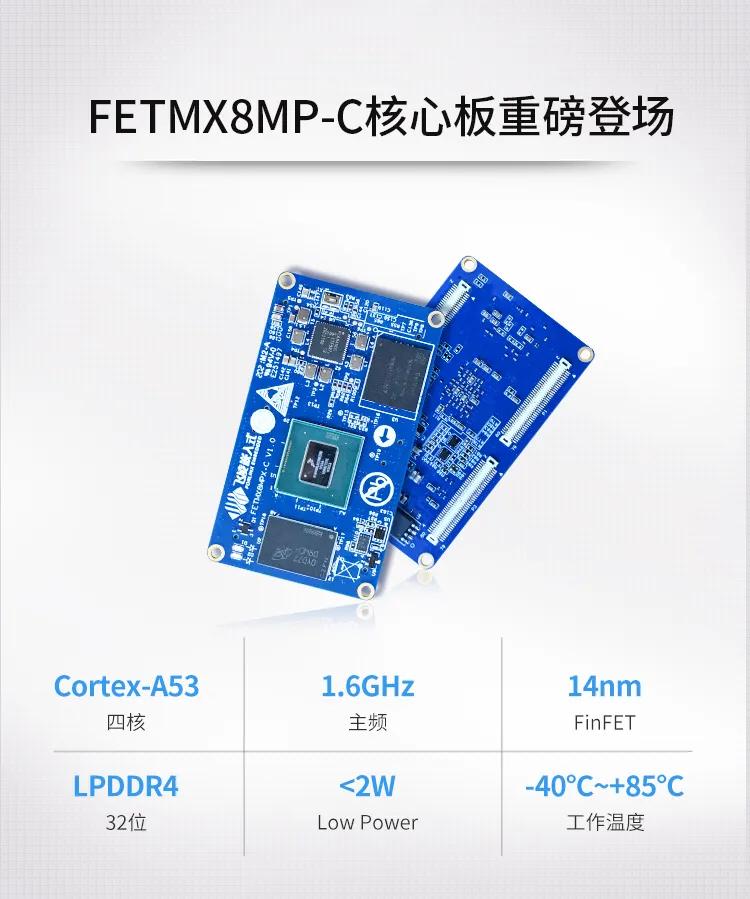Commercial vehicle intelligent driving terminal based on FETMX8MP-C core board

1. Background:
In March 2019, the Ministry of Transport of the People’s Republic of my country issued JT/T 1178.2, which is the "Operating Truck Safety Technical Regulations Part 2: Towing Vehicles and Trailers", which stipulates that from May 1, 2020, newly produced tractors should have Vehicle Forward Collision Warning (FCW) and Lane Departure Warning (LDW), both of which can be implemented through commercial vehicle intelligent driving terminals. Some intelligent devices with functions included in advanced driver assistance systems (ie ADAS).
In addition to the mandatory requirements of national standards for towing vehicles to be equipped with FCW and LDW, many commercial vehicles such as construction vehicles and trucks will also be equipped with related functions for safety reasons. These applications undoubtedly promote the demand for intelligent driving terminals for commercial vehicles from a market perspective. At the same time, , Lower cost and richer functions have also become the direction for car manufacturers to iterate on product technology. With the increasingly powerful performance of embedded ARM architecture processors, intelligent driving terminals for commercial vehicles developed based on the ARM platform have become the choice of more and more car manufacturers and related equipment suppliers.
2. User needs
A domestic heavy-duty vehicle factory needs to iterate on the existing X86 architecture commercial vehicle intelligent driving terminal to achieve the goal of reducing costs and improving operational stability. In the stage of selecting the main control architecture of the device, the user comprehensively evaluates that ARM has more advantages in this application. In the specific processor selection stage, users put forward the following requirements:
1. Dual gigabit network, connect webcam and lidar
2. Dual camera
3. Low power consumption, can achieve long-term stable operation
4. 4G/5G network to communicate with the server
5. HDMI interface, external display screen for debugging
6. A certain edge computing capability is required to meet the local implementation of some algorithms in ADAS
7. Support CAN-FD to meet the high bus load rate and network congestion pressure caused by the increase in data volume in ADAS
8. At least 5 years supply cycle
9. Solve the pain points of development difficulty and long development cycle when software and hardware engineers develop products based on unfamiliar ARM processors
Third, the plan is realized
According to the selection requirements put forward by users, Feiling Embedded recommends the FETMX8MP-C core board. This core board is based on the NXP i.MX 8M Plus processor design, equipped with 4 Cortex-A53 cores with a frequency of up to 1.6GHz and 1 Cortex-M7 core for real-time control, and supports dual Gigabit Ethernet , Supports dual MIPI cameras, supports dual USB 3.0, supports 4G/5G communication modules, supports HDMI interface, at the same time, comes with 2 CAN-FD, 1 PCIe 3.0, and the processor integrates a dedicated neural processing engine (NPU ), the computing power is up to 2.3TOPS, which can meet the local lightweight edge computing. The processor operating power consumption of the FETMX8MP-C core board is less than 2W, and it can be designed without a fan and can run stably for a long time.
After user evaluation, the FETMX8MP-C core board can meet product design requirements functionally. At the same time, choosing the core board for product development can greatly reduce the difficulty of getting started and development of the i.MX 8M Plus processor and shorten the product launch time. In addition, the i.MX 8M Plus processor is part of NXP's long-term supply guarantee program, and its life cycle is as long as 10 to 15 years. This also enables the FETMX8MP-C core board to have a supply cycle of more than 10 years.

